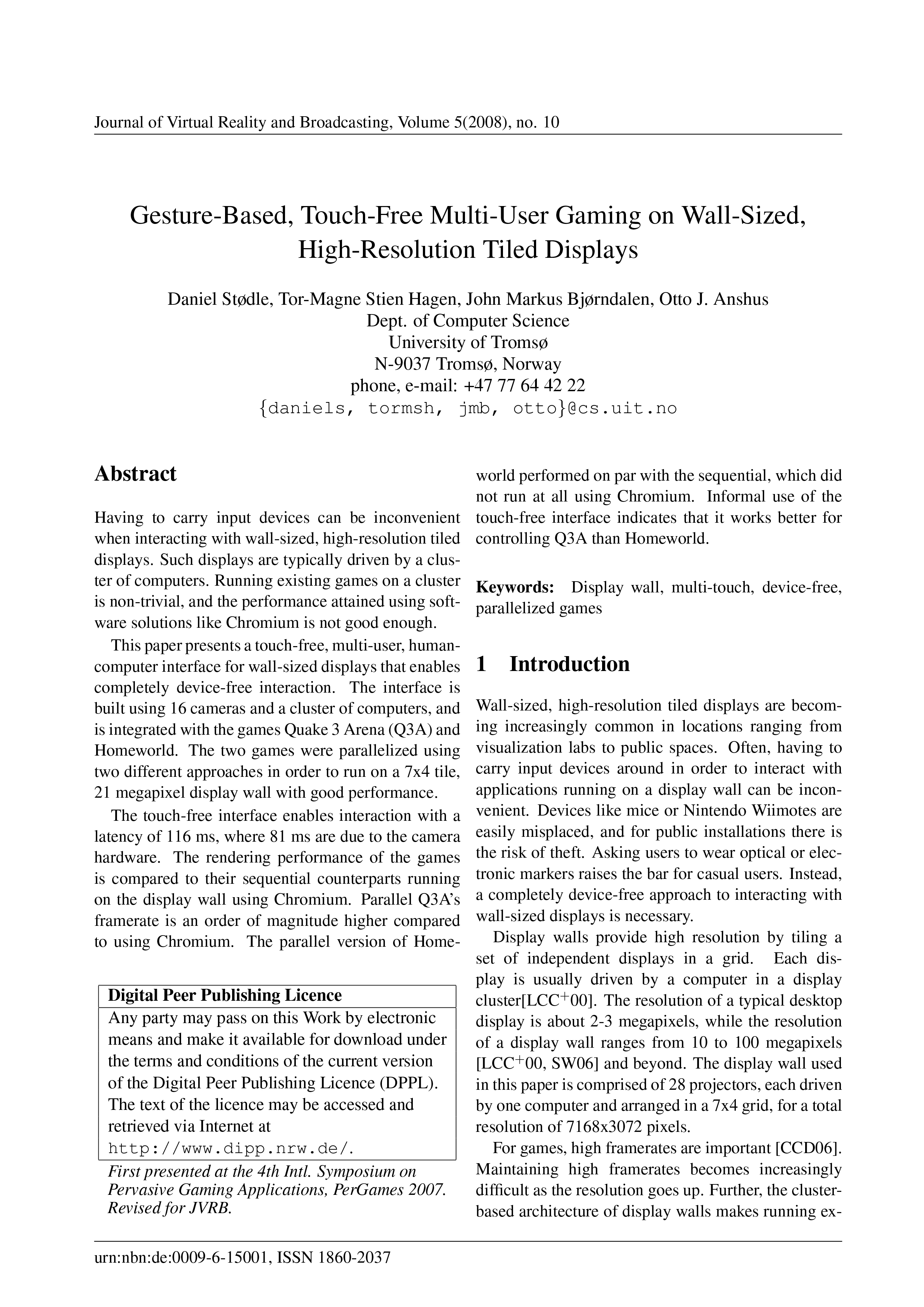Gesture-Based, Touch-Free Multi-User Gaming on Wall-Sized, High-Resolution Tiled Displays
DOI:
https://doi.org/10.20385/1860-2037/5.2008.10Keywords:
Display wall, device-free, multi-touch, parallelized gamesAbstract
Having to carry input devices can be inconvenient when interacting with wall-sized, high-resolution tiled displays. Such displays are typically driven by a cluster of computers. Running existing games on a cluster is non-trivial, and the performance attained using software solutions like Chromium is not good enough. This paper presents a touch-free, multi-user, humancomputer interface for wall-sized displays that enables completely device-free interaction. The interface is built using 16 cameras and a cluster of computers, and is integrated with the games Quake 3 Arena (Q3A) and Homeworld. The two games were parallelized using two different approaches in order to run on a 7x4 tile, 21 megapixel display wall with good performance. The touch-free interface enables interaction with a latency of 116 ms, where 81 ms are due to the camera hardware. The rendering performance of the games is compared to their sequential counterparts running on the display wall using Chromium. Parallel Q3A’s framerate is an order of magnitude higher compared to using Chromium. The parallel version of Homeworld performed on par with the sequential, which did not run at all using Chromium. Informal use of the touch-free interface indicates that it works better for controlling Q3A than Homeworld.
Published
2008-08-08
Issue
Section
PerGames 2007





